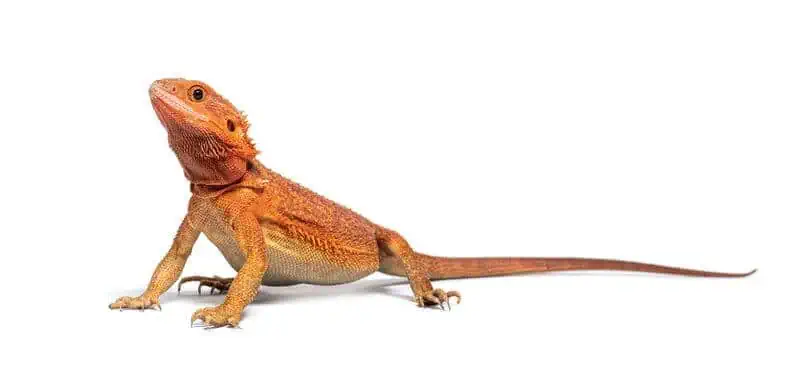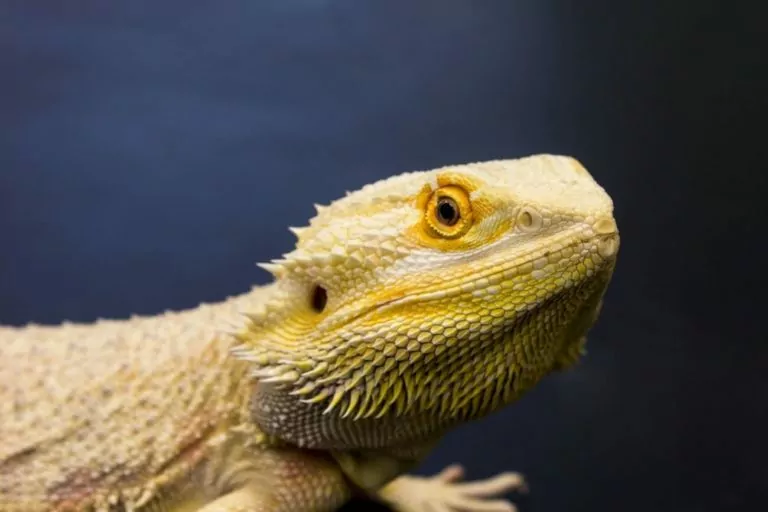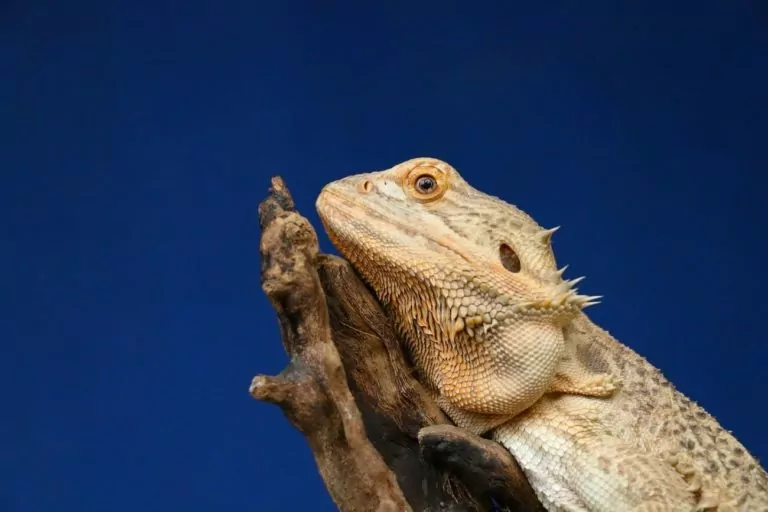While most owners tend to give their bearded dragons a very standard diet, other owners like to experiment and learn what else can be fed to their pet. And mice are a food that many of them consider!
This guide goes over if bearded dragons can eat mice, and what you should do to prepare this food properly.
Table of Contents
Can Bearded Dragons Eat Mice?
Can bearded dragons eat mice? Yes they can, and wild bearded dragons will often eat small animals, such as lizards, mice or rats.
But while a wild beardie may need to eat the occasional mouse in order to survive, it’s not recommended that your pet bearded dragon do so. For reasons that we will discuss later, mice should only be given as a treat or in certain, specific circumstances.
Are Mice Good For Bearded Dragons?
If you look at mice from a purely nutritional standpoint, then it would seem that letting bearded dragons eat mice would come with a number of benefits. Mice are loaded with protein, fat, calcium, and phosphorus, and the ever-important calcium to phosphorus ratio in mice is exactly on target.
But despite the impressive nutritional statistics, there are several problems with giving mice to your beardie.
Watch The Fat Content
One of the problems with letting your bearded dragon eat is the high fat content of these rodents. Bearded dragons are prone to obesity, so it’s important to stay away from foods with lots of fat, and that includes mice.
A diet rich in leafy greens and low-fat proteins is what your bearded dragon needs to stay slim, trim and healthy. Because of this, mice should be given only as an occasional treat. In fact, your bearded dragon’s diet should only be around 30 percent protein, and low-fat feeder insects are an excellent protein source and are much healthier than mice.
Impaction Concerns
An impaction can be a very serious condition for your bearded dragon and can cause paralysis and even death. The fur and hard bones of mice are very hard for a bearded dragon to digest, and parts of the mouse can get stuck in the digestive tract, causing an impaction. This is why, if you are going to give a mouse to your beardie, then it should be a pinky mouse only.
Other Health Issues
Not only are mice associated with obesity and impactions, but their high fat content increases the chance of your lizard developing serious problems, such as gout or fatty liver disease.
Health Benefits
Even though we don’t suggest making mice more than the occasional treat for your bearded dragon, there are some instances when mice can provide needed health benefits.
Pregnant females require extra calcium, fat and energy-providing nutrients. Mice are full of things that are good for pregnant beardies, and their high fat content gives pregnant females a much-needed boost of energy. However, this doesn’t mean that it’s fine to give mice to them every day. Too much fat is not healthy for these reptiles either.
If your bearded dragon has been ill, or if it is not gaining weight properly, then its diet can be supplemented with the occasional pinky mouse for the extra fat and protein.
Feeder insects are usually the best sources of protein for a bearded dragon, so it’s a good idea to talk to your vet before adding mice to your pet’s diet.
What Kind Of Mice Can They Eat?
As we discussed earlier, it’s alright to add a mouse to your bearded dragon’s diet on occasion. However, the type of mouse that you provide matters a lot.
The only kind of mouse that bearded dragons should ever eat is a pinky mouse. Pinky mice are a type of feeder mouse that is less than five days old. It’s completely hairless, has soft bones and is pink in color.
Once a mouse is older than five days, it begins to develop fur, and its bones begin to harden. It then becomes known as, you guessed it, a fuzzy. Fuzzy mice should never be given to your beardie because the fur and harder bones make these mice very hard to digest. Problems with digestion can easily lead to impaction.
How Often Can Bearded Dragons Eat Mice?
For those of you who still want to let your bearded dragon eat a mouse or two, there is a limit to how often this can safely be done. Once a month is ideal.
Expert Tip: Remember that if you are giving pinky mice to your beardie, then you’ll need to monitor its fat intake from other sources. Feeder insects contain fat as well, so even one mouse a month can add a significant amount of fat. A good idea is to cut down on feeder insects around the time that you want to add a mouse to meal time.
Always call your pet’s veterinarian with any feeding questions or concerns.
How To Feed Mice To Your Bearded Dragon
We’d like to reiterate here that you should only be feeding pinky mice to your bearded dragon. If the mouse has fur (even just a little bit) don’t give it to your pet.
So what kind of pinkies should you use? In our opinion, it’s best to buy frozen pinky mice for your bearded dragon to eat. In the wild, these reptiles are used to dealing with live prey, but pets are not. Putting live mice in their enclosure is asking for trouble, and your beardie could become injured if the prey decides to fight back.
Keep pinkies in your freezer until it’s time to use them. Then, the pinky you are going to let your bearded dragon eat should be slowly defrosted in a bowl of lukewarm water for about 15-25 minutes. Don’t be tempted to defrost pinkies in any other way, even if it’s faster. Using a microwave, an oven or boiling water is only going to make a giant mess.
Mice should always be between 86 and 95 degrees before being given to your lizard. Too cold, and it could be bad for digestion, and temperatures that are too hot could burn your beardie.
Once the pinky is safely defrosted, you can just put it in the cage. There is no need to cut it up, because a bearded dragon will be able to eat a pinky mouse whole.
After your bearded dragon is done eating the mouse, make sure to remove any remains that are left in the enclosure. Leaving leftovers in the tank is a health hazard and should be avoided.
Conclusion
Bearded dragons can eat mice, but it’s not something you should do very often. If you’re in a situation where you deem it necessary to include mice in their diet, make sure you follow our recommendations (and only get pinky mice).
If you have any questions about this, send them over to your vet. They’ll be able to help you out and provide expert feedback!



